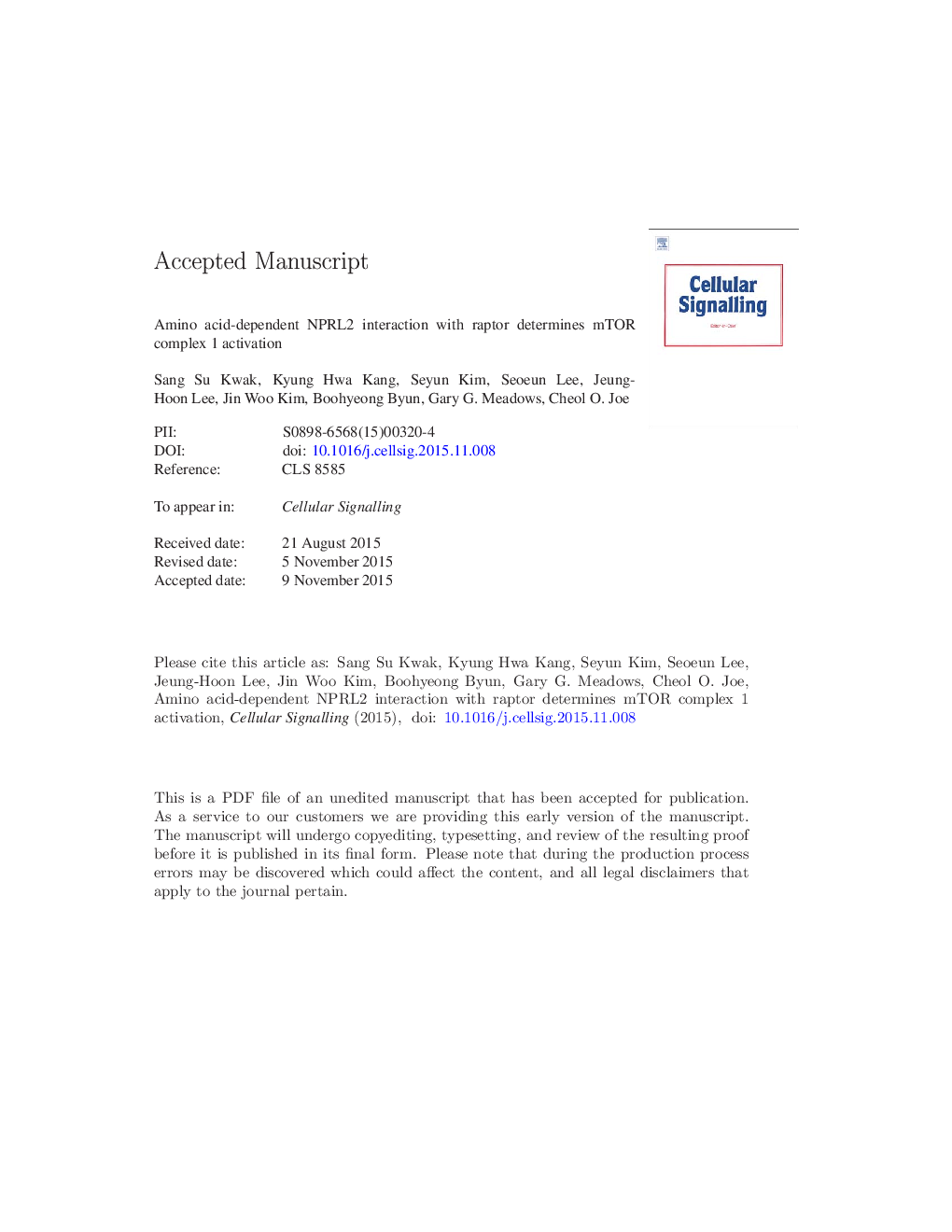| Article ID | Journal | Published Year | Pages | File Type |
|---|---|---|---|---|
| 10814777 | Cellular Signalling | 2016 | 29 Pages |
Abstract
We assign a new function to a tumor suppressor NPRL2 that activates the mTOR complex 1 (mTORC1) activity. The positive regulation of mTORC1 activity by NPRL2 is mediated through NPRL2 interaction with Raptor. While NPRL2 interacts with Rag GTPases, RagD in particular, to interfere with mTORC1 activity in amino acid scarcity, NPRL2 interacts with Raptor in amino acid sufficiency to activate mTORC1. A reciprocal relationship exists between NPRL2 binding to Rag GTPases and Raptor. NPRL2 majorly locates in the lysosomal membranes and has a higher binding affinity to the dominant negative mutant heterodimer of RagAGDP/RagDGTP that inactivates mTORC1. However, the binding affinity of NPRL2 with Raptor is much less pronounced in cells expressing the dominant negative mutant heterodimer of RagAGDP/RagDGTP than in cells expressing the dominant positive mutant heterodimer, RagAGTP/RagDGDP. The positive effect of NPRL2 on TORC1 pathway was also evidenced in Drosophila animal model. Here, we propose a 'seesaw' model in which the interactive behavior of NPRL2 with Raptor determines mTORC1 activation by amino acid signaling in animal cells.
Keywords
Related Topics
Life Sciences
Biochemistry, Genetics and Molecular Biology
Biochemistry
Authors
Sang Su Kwak, Kyung Hwa Kang, Seyun Kim, Seoeun Lee, Jeung-Hoon Lee, Jin Woo Kim, Boohyeong Byun, Gary G. Meadows, Cheol O. Joe,
